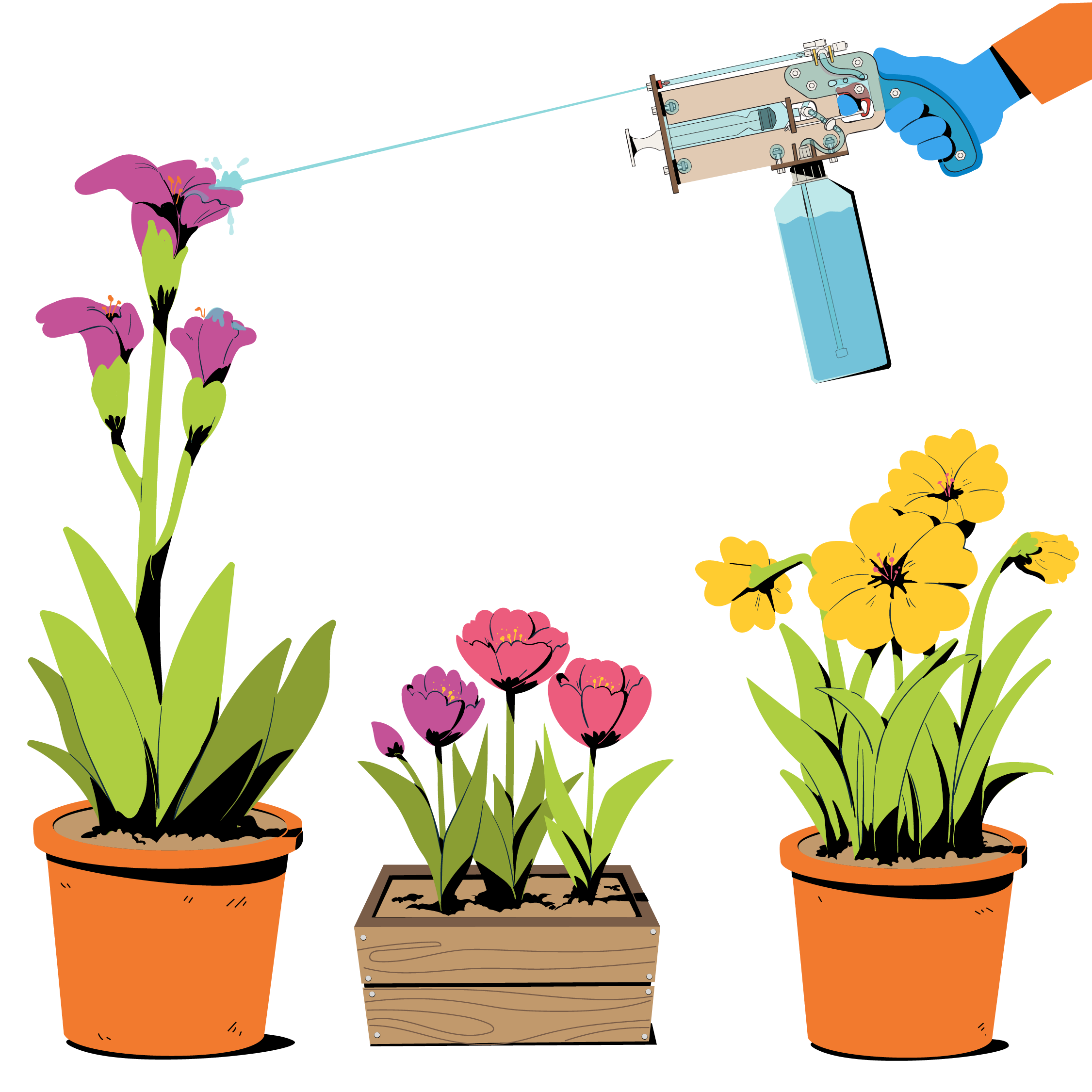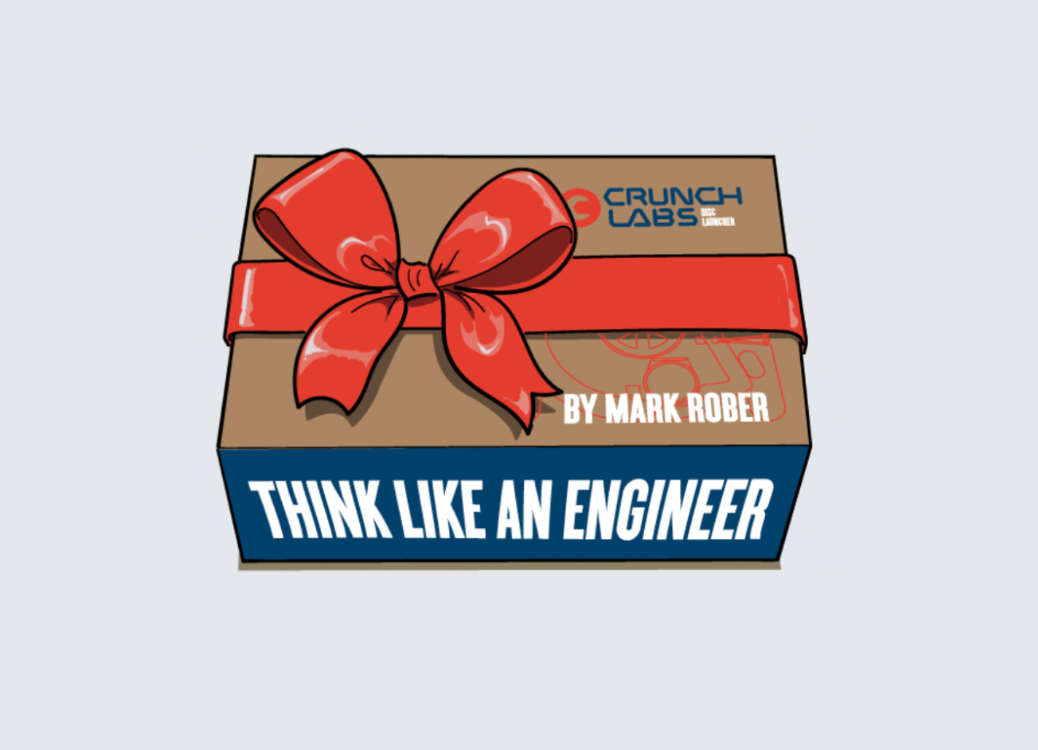
Goodbye winter, spring is almost here! If you're like us, then you know that each new season brings new ways to make STEM fun. While we'll miss calculating the trajectory of our snowballs and measuring the velocity of our sleds as we slide down snowy hills, we're excited for all the activities and events we have ahead of us.
Here's our guide to making the most out of spring, CrunchLabs style!
Goodbye winter, spring is almost here! If you're like us, then you know that each new season brings new ways to make STEM fun. While we'll miss calculating the trajectory of our snowballs and measuring the velocity of our sleds as we slide down snowy hills, we're excited for all the activities and events we have ahead of us.
Here's our guide to making the most out of spring, CrunchLabs style!
Goodbye winter, spring is almost here! If you're like us, then you know that each new season brings new ways to make STEM fun. While we'll miss calculating the trajectory of our snowballs and measuring the velocity of our sleds as we slide down snowy hills, we're excited for all the activities and events we have ahead of us.
Here's our guide to making the most out of spring, CrunchLabs style!
The Spring Equinox
The Spring Equinox
The Spring Equinox

You may have heard of the summer solstice, which is the longest day of the year, or the winter solstice, which is the shortest. But what happens in spring and fall? You get an equinox!
The day of the equinox has twelve equal hours of daytime and nighttime.
This year, the spring equinox is on March 19th 2024 and it's the first official day of spring! Really, the equinox marks the turning point from the shorter days of winter to the longer days of summer. There will be another equinox later in the year, too. The fall equinox lands on September 22nd 2024, and marks the seasonal change when the long days of summer become the short days of winter.
But wait...why do days get longer or shorter at all?
Let's zoom out.
The answer has to do with planet Earth's orientation to the sun in outer space. As the Earth spins on its own axis, one side of it faces the sun, and one side faces away. In one rotation, your side of the Earth will face the sun (daytime) and then rotate away from it (nighttime). That's why it's morning on one side of the world at the same time it's night on the other!
While Earth rotates, it also revolves around the sun. If one day is one full spin of planet Earth, one year is one full loop around the sun.
You may have heard of the summer solstice, which is the longest day of the year, or the winter solstice, which is the shortest. But what happens in spring and fall? You get an equinox!
The day of the equinox has twelve equal hours of daytime and nighttime.
This year, the spring equinox is on March 19th 2024 and it's the first official day of spring! Really, the equinox marks the turning point from the shorter days of winter to the longer days of summer. There will be another equinox later in the year, too. The fall equinox lands on September 22nd 2024, and marks the seasonal change when the long days of summer become the short days of winter.

But wait...why do days get shorter or longer at all?
You may have heard of the summer solstice, which is the longest day of the year, or the winter solstice, which is the shortest. But what happens in spring and fall? You get an equinox!
The day of the equinox has twelve equal hours of daytime and nighttime.
This year, the spring equinox is on March 19th 2024 and it's the first official day of spring! Really, the equinox marks the turning point from the shorter days of winter to the longer days of summer. There will be another equinox later in the year, too. The fall equinox lands on September 22nd 2024, and marks the seasonal change when the long days of summer become the short days of winter.
But wait...why do days get shorter or longer at all?
Let's zoom out.
The answer has to do with planet Earth's orientation to the sun in outer space. As the Earth spins on its own axis, one side of it faces the sun, and one side faces away. In one rotation, your side of the Earth will face the sun (daytime) and then rotate away from it (nighttime). That's why it's morning on one side of the world at the same time it's night on the other!
While Earth rotates, it also revolves around the sun. If one day is one full spin of planet Earth, one year is one full loop around the sun.
Let's zoom out.
The answer has to do with planet Earth's orientation to the sun in outer space. As the Earth spins on its own axis, one side of it faces the sun, and one side faces away. In one rotation, your side of the Earth will face the sun (daytime) and then rotate away from it (nighttime). That's why it's morning on one side of the world at the same time it's night on the other!
While Earth rotates, it also revolves around the sun. If one day is one full spin of planet Earth, one year is one full loop around the sun.

The thing is though, the axis of the Earth doesn't sit completely upright, it's actually tilted at an angle of 23.5 degrees. This means that during the year, some parts of the Earth are closer to the sun and some parts are farther away.
When your part of the Earth is tilted towards the sun, the days get longer, and when it's tilted away, they get shorter.
This just means that the angle of the Earth's tilt towards the sun is responsible for how we measure time and mark the changing seasons.
In this case, the divide falls between the Northern and Southern Hemispheres at the equator.
What's the equator? It's an imaginary line that circles the middle of the globe dividing the planet into two halves.
So while we're getting ready for spring here at CrunchLabs in the Northern Hemisphere, our friends living in the Southern Hemisphere are getting ready for fall.

The thing is though, the axis of the Earth doesn't sit completely upright, it's actually tilted at an angle of 23.5 degrees. This means that during the year, some parts of the Earth are closer to the sun and some parts are farther away.
When your part of the Earth is tilted towards the sun, the days get longer, and when it's tilted away, they get shorter.
This just means that the angle of the Earth's tilt towards the sun is responsible for how we measure time and mark the changing seasons.
In this case, the divide falls between the Northern and Southern Hemispheres at the equator.
What's the equator? It's an imaginary line that circles the middle of the globe dividing the planet into two halves.
So while we're getting ready for spring here at CrunchLabs in the Northern Hemisphere, our friends living in the Southern Hemisphere are getting ready for fall.
April Showers Bring...Rainbows!
Celebrate the Earth
Celebrate the Earth

Seeing plants begin to bloom in spring after a long winter makes it the perfect time to think about ways to celebrate the Earth! Nature can be absolutely beautiful, and we can all do what we can to keep it that way.
Here are some ideas:
Start your own garden!
Help out some wild plants you observe by giving them some water after the weather's been a bit dry. You can use your Wet Bandit as a watering can to show off your builds (...or maybe set someone up for a prank?)
Mark your calendar for Earth Day!
Earth Day is a holiday all about our planet, and what we can do to take care of it. It was first celebrated in 1970, and has been going strong ever since!
This year, Earth Day in the US falls on April 22nd, and the theme is "People vs. Plastics". If you're a Build Box subscriber, you're already ahead of the curve, because our toys are made of wood and use no plastic in their packaging!
Tackle a new project!
Spring is a great time to start something new. Maybe you'll organize a recycling program in your office or school, or join a cleanup effort at a local beach or park to keep waste out of nature.
Check out an existing cause!
If starting something completely new doesn't fit into your schedule, you can always contribute to something in the works! Team Trees or Team Seas are a great place to start and help donate to plant trees and keep garbage out of our oceans.
Whatever you choose, remember that we wouldn't be here without our planet, so we need to work together to keep it healthy!
We hope you have tons of fun this spring and beyond! Remember, no matter the season, there's always something fun right around the corner. Happy STEM!
Everyone Loves CrunchLabs!
"CrunchLabs products have shown to last for weeks after completion while the kids create games or challenges to play with them!"
"Your videos cover so much more than any other subscription we've tried! The kids get so many incredible ideas and they spin off on things on their own."
"Having the video with Mark teaching and sharing his knowledge with the kids in his usual fun and passionate way is the BEST PART for sure!"
Not Subscribed? Not a Problem!

Whether your kids are new to STEM or practically professionals, the Build Box is the perfect way to foster their love for science and engineering! Each Box comes with an awesome build-it-yourself toy, and we'll teach them how to build it AND the STEM principles at work!
US Shipping Cost FREE

Not Subscribed? Not a Problem!
Whether your kids are new to STEM or practically professionals, the Build Box is the perfect way to foster their love for science and engineering! Each Box comes with an awesome build-it-yourself toy, and we'll teach them how to build it AND the STEM principles at work!
US Shipping Cost FREE
US Shipping Cost FREE

